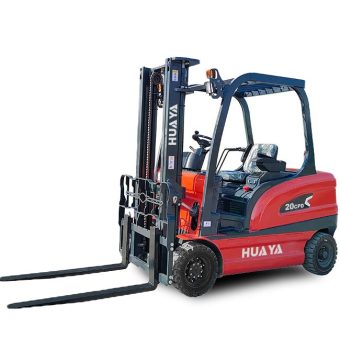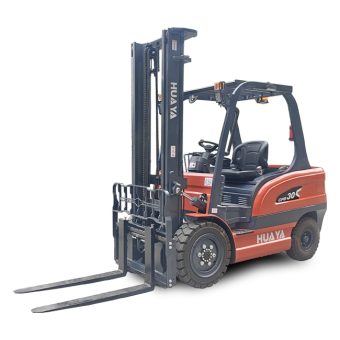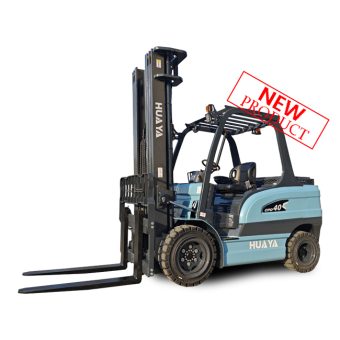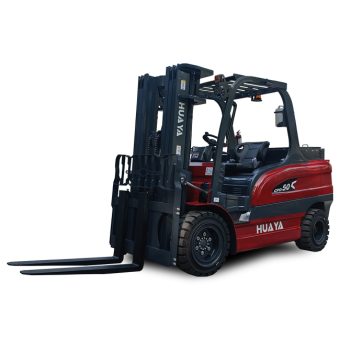
Noticias
Las carretillas elevadoras son herramientas esenciales en almacenes, obras de construcción, fábricas y centros logísticos de todo el mundo. Aunque ofrecen una eficacia inigualable en la manipulación de materiales, también plantean importantes riesgos de seguridad si no se utilizan de acuerdo con la normativa. Uno de los protocolos de seguridad más importantes y a menudo más incomprendidos es la regla de los 2 metros para las carretillas elevadoras.
En este artículo analizaremos qué significa la norma de los 2 metros, por qué existe, cómo protege a los trabajadores y cómo pueden garantizar su cumplimiento los empresarios y operadores para mantener un entorno de trabajo seguro.
La regla de los 2 metros (2m) para carretillas elevadoras es una directriz de seguridad de proximidad que exige una distancia mínima de 2 metros (aproximadamente 6,5 pies) entre una carretilla elevadora en funcionamiento y peatones u otro personal.
Esta norma sirve para:
Evitar colisiones accidentales
Reduzca el riesgo de lesiones por movimientos bruscos, marcha atrás o desplazamientos de la carga
Garantizar un tiempo de reacción adecuado tanto para el peatón como para el operador
Esta norma suele aplicarse junto con otras políticas de seguridad específicas del centro y puede variar ligeramente según la región o el organismo regulador (como OSHA en EE.UU. o HSE en el Reino Unido). No obstante, el principio sigue siendo el mismo: es fundamental mantener una zona de seguridad alrededor de las carretillas elevadoras en movimiento.
Incluso con retrovisores y sensores modernos, es posible que los operadores no tengan una visión completa de su entorno, especialmente cuando transportan cargas altas o anchas. Una separación de 2 metros ayuda a reducir los riesgos de ángulo muerto.
Las carretillas elevadoras pueden girar o dar marcha atrás repentinamente. Una distancia de 2 metros da a los peatones tiempo para reaccionar y apartarse.
Las carretillas elevadoras transportan cargas que pueden desplazarse o caer. Mantenerse a 2 metros de distancia reduce las posibilidades de ser golpeado por la caída de material.
Las carretillas elevadoras suelen desplazarse a velocidades de 5-10 mph. A esas velocidades, parar rápidamente no siempre es posible. Una distancia de 2 m ayuda a compensar el tiempo de frenado.
Garantizar el cumplimiento de la norma de los 2 metros es una responsabilidad compartida entre el empresario, los operadores de carretillas elevadoras y los peatones. He aquí cómo puede aplicarse eficazmente:
✅ 1. Formación y sensibilización
Impartir formación periódica a los operadores de carretillas elevadoras y al personal de almacén.
Incluya la regla de los 2 metros en las sesiones informativas sobre seguridad y en los materiales de incorporación.
✅ 2. Señalización y marcas en el suelo
Utilice señales visuales como zonas pintadas, cintas o barreras para designar las distancias de seguridad.
Señalice claramente los pasos de peatones y sepárelos de los carriles para carretillas elevadoras.
✅ 3. Barreras físicas
Instale barandillas o bolardos en zonas muy transitadas.
Utilice puertas batientes o barreras en las entradas de los almacenes para evitar cruces involuntarios.
✅ 4. Integración de la tecnología
Despliegue sensores de proximidad o sistemas de aviso para peatones con carretillas elevadoras.
Algunas carretillas elevadoras avanzadas incorporan sistemas de detección de peatones basados en IA que alertan a los operadores.
✅ 5. Ejecución
Hacer que el cumplimiento forme parte de las auditorías de seguridad.
Aplicar sanciones en caso de incumplimiento reiterado o comportamiento inseguro.
Aunque la regla de los 2 m es una directriz general de seguridad, no siempre es posible mantener esta distancia en almacenes muy apretados o durante tareas específicas como la carga o el mantenimiento. En tales casos:
Utilice un observador para guiar las operaciones de la carretilla elevadora
Aplicar zonas de parada cuando las carretillas elevadoras trabajen cerca de personas.
Proporcionar ropa de alta visibilidad y garantizar el contacto visual entre el operador y el peatón
Aunque la regla de los 2 metros no está codificada en el marco normativo de todos los países, se ajusta a las cláusulas de obligación general de las leyes de seguridad laboral:
OSHA (EE.UU.): Obliga a los empresarios a proteger a los trabajadores frente a peligros reconocidos, incluidos los accidentes de atropello y atrapamiento con carretillas industriales motorizadas.
HSE (REINO UNIDO): Recomienda mantener separados a peatones y vehículos mediante el diseño y la planificación.
Safe Work Australia: Aconseja aplicar la separación de instalaciones y personas siempre que sea razonablemente viable.
El cumplimiento de la norma de los 2 metros demuestra la diligencia debida y la adhesión a las mejores prácticas internacionales en materia de seguridad de las carretillas elevadoras.
La regla de los 2 metros para las carretillas elevadoras es algo más que un número: es un amortiguador que salva vidas. Tanto si eres jefe de obra, operador de carretilla elevadora o trabajador de almacén, entender y respetar esta regla es esencial para mantener un entorno de trabajo seguro.
Al incorporar esta norma a las operaciones diarias, las empresas pueden reducir los riesgos de lesiones, mejorar el cumplimiento y fomentar una cultura de seguridad y concienciación.
P1: ¿Es la norma de los 2 metros un requisito legal?
R: No siempre, pero es una buena práctica reconocida en las auditorías de seguridad y en las directrices de seguridad en el lugar de trabajo de todo el mundo.
P2: ¿Qué ocurre si se infringe la norma de los 2 metros?
R: Las infracciones pueden dar lugar a lesiones, sanciones reglamentarias o responsabilidades legales, dependiendo de la jurisdicción y de las consecuencias del incidente.
P3: ¿Puede reducirse la norma de los 2 metros con controles adecuados?
R: Sólo bajo estricta supervisión y con medidas de seguridad adicionales como barreras, observadores o zonas de parada.



